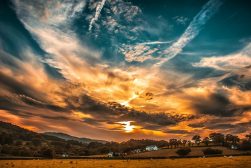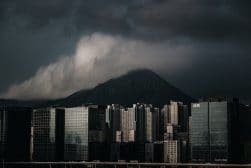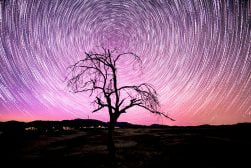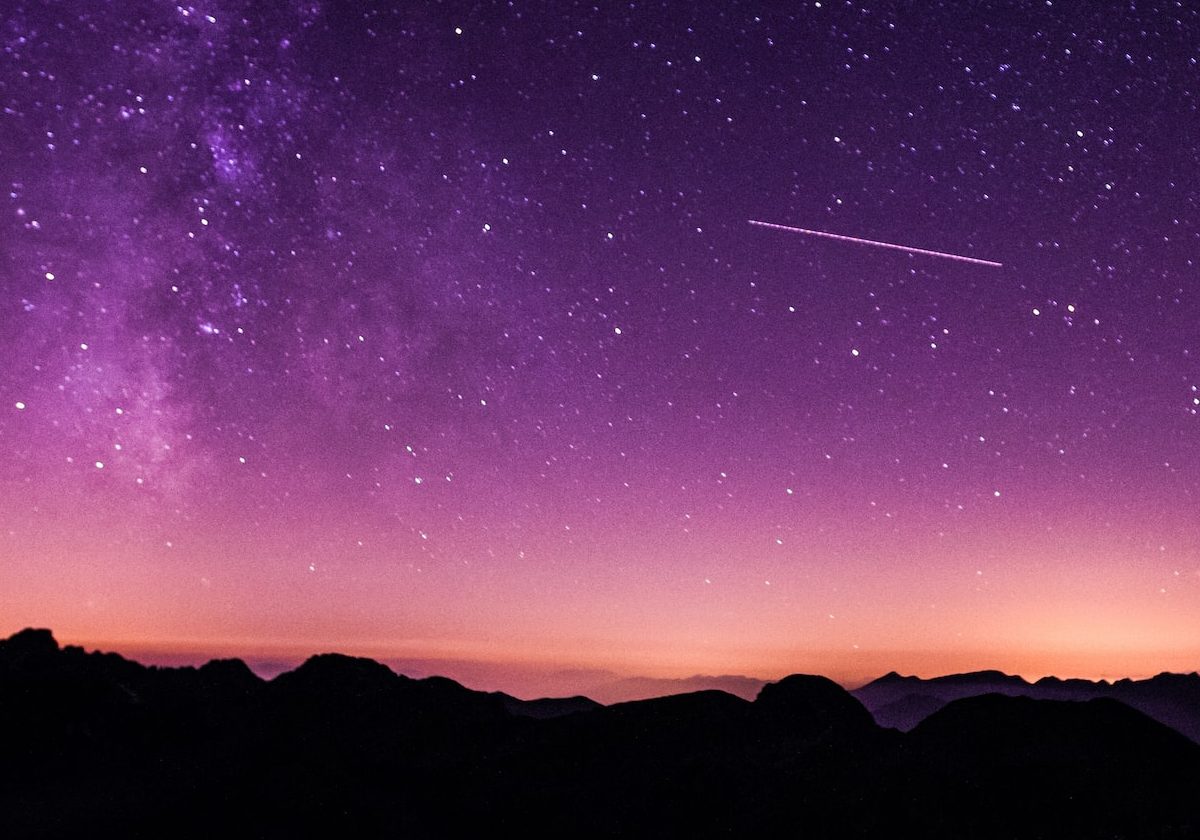
Enjoy astrophotography? Here’s what to know about light pollution
News | By Stephan Jukic | February 20, 2023
One of the sad things about our modern world is that the night skies have become suffused with light pollution, and it’s getting worse.
This obviously applies to urban and suburban areas, but it has also spread to parts of the world that most urban dwellers would consider pretty dark and remote.
The bottom line even for many deeply rural or outright distant wilderness regions of the planet is that despite seeming extremely dark compared you your average city park or rooftop, they’re actually contaminated by human light.
Even on the clearest, darkest moonless night, their level of ambient darkness isn’t as deep as it really should be. In other words, astrophotographers who want to enjoy the purest possible dark skies have to move steadily further afield to get them.
Research data backs this up as well. Satellite surveillance of planetary light conditions created by human civilization was previously thought to show a steady annual increase of about 2% in contamination.
More recent findings published in Science Magazine have however shown that we’re really facing closer to an annual light pollution growth of 10%. These same findings also note that satellite data doesn’t always detect these changing levels of pollution.
Instead, field measurements conducted by thousands of citizen scientists between 2011 and 2022 sometimes wildly differed from satellite ratings of ambient darkness.
According to these research findings and field measurements, part of the problem is with the growing use of LED lights. Ironically, these are being used more than ever in urban areas to combat energy waste and its own associated pollution.
As the article explains, “Satellites can measure the light emitted upward, but they are not sensitive to all wavelengths produced by LED lighting or to light emitted horizontally,”
Basically, we’re trading in one type of widely known environmental problem for a much less apparent variant.
It’s not just satellites that fail to notice all light contamination either: Roughly 56% of the world’s population or 4.4 billion people live in urban areas. This means the vast majority of these human beings live in a context that doesn’t even really let them perceive how dark a natural sky should be.
Moreover, these people’s nightly context of city or town lights doesn’t let them notice a problem with its decreasing brightness, even whenever they do venture into the wild.
The reason why is simple: Whenever many urban dwellers do visit the countryside, the change from urban night to rural night skies is already so drastic that some degree of rural light pollution is hard to perceive unless you know what to look for.
Fortunately, there’s a specific scale for measuring exactly that, and useful digital maps that demonstrate just how much of the world’s night skies are contaminated, and to what degree with leaking human light.
The most basic element of measuring this is something called the Bortle Scale, which rates from 1 to 9.
Level 1, or “Bortle 1” on the scale represents a perfect night sky, completely free of any artificial light interference of any measurable level.
Level 9 (Bortle 9) on the other hand is a highly saturated deep inner city sky of the kind you might find looking up for stars from the middle of Manhattan or some other huge urban area.

The Bortle scale ranking of midtown Manhattan
In between are all the variable levels of ambient light pollution and darkness that you might find in different settings. For example, a suburban sky, depending on its proximity to a major city center, might rank anywhere from Bortle 5 to Bortle 7.
On the other hand, a typical rural sky will usually be a 3 or 4 on the Bortle scale. Truly saturated night skies with a Bortle 8 to 9 rating are fortunately still rare outside of major cities. However, skies with a steadily increasing light creep from Bortle 3 to higher levels are becoming ever more common.
Parts of the world that rank at a Bortle 1 level are also growing rare, usually being found in the deeper parts of vast wilderness areas or over the oceans. Most of all, they’re far away from any cities and most coastal areas (where most of the world’s population lives).

Bortle 1 area in the Nevada desert hundreds of km north of Las Vegas or any other city
The light pollution problem is especially about increases in the middle categories of the Bortle scale, in which areas previously considered “deep night skies” with a Bortle 2 rating steadily turn into Bortle 3, 4, or even Bortle 5 regions.
This light pollution map demonstrates just how much light pollution there is in the world and how much of our continents it covers.
If you take a close look, you’ll notice that many whole countries and even the majority parts of entire continents don’t have so much as a single place with a Bortle 1 ranking.
In the continental United States, for example, almost no piece of land exists east of Kansas City with a Bortle 1 ranking, though there are scattered wild areas with very good Bortle 2 deep night sky ratings.
The UK along with Western and Central Europe south of Scandinavia is even worse for would-be astrophotography purists. Dutch and Belgian skywatchers in particular are pretty much screwed for good star gazing on land:
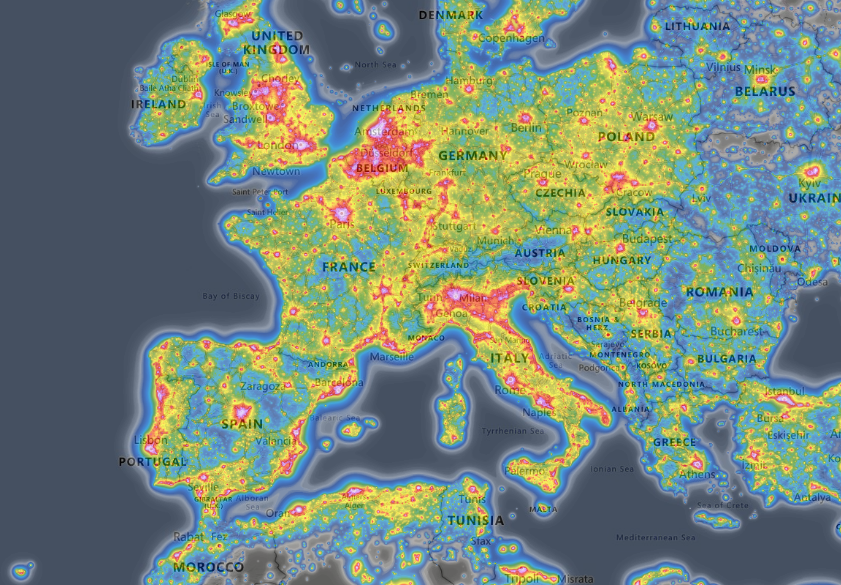
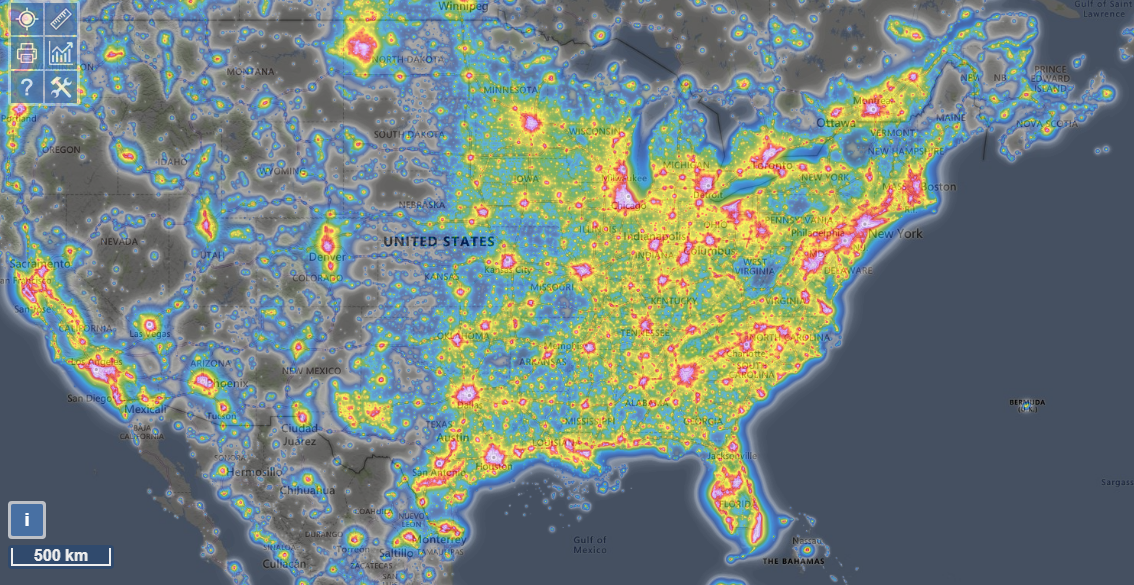
Despite all this bad brightness news, none of the above means that you can’t still enjoy great night shots of the skies from close to home, even if you live in a city. It just might cost you more to do it.
With the right kinds of equipment and with cameras that offer strong ISO performance, a patient urban astrophotographer can still take beautiful pictures of the night skies and all their wonders.
This can work even from a rooftop in Manhattan, or somewhere like inner Toronto. Many photographers do pull it off, and their results can be pretty spectacular, even if they mean more effort and equipment.
However, the underlying point remains: the night skies are losing their rich darkness worldwide.
For those of us who want to truly experience these skies as our prehistoric ancestors enjoyed them just a few steps from their campfires, it could mean traveling hundreds, or even thousands of kilometers in much of the world.

Check out these 8 essential tools to help you succeed as a professional photographer.
Includes limited-time discounts.





